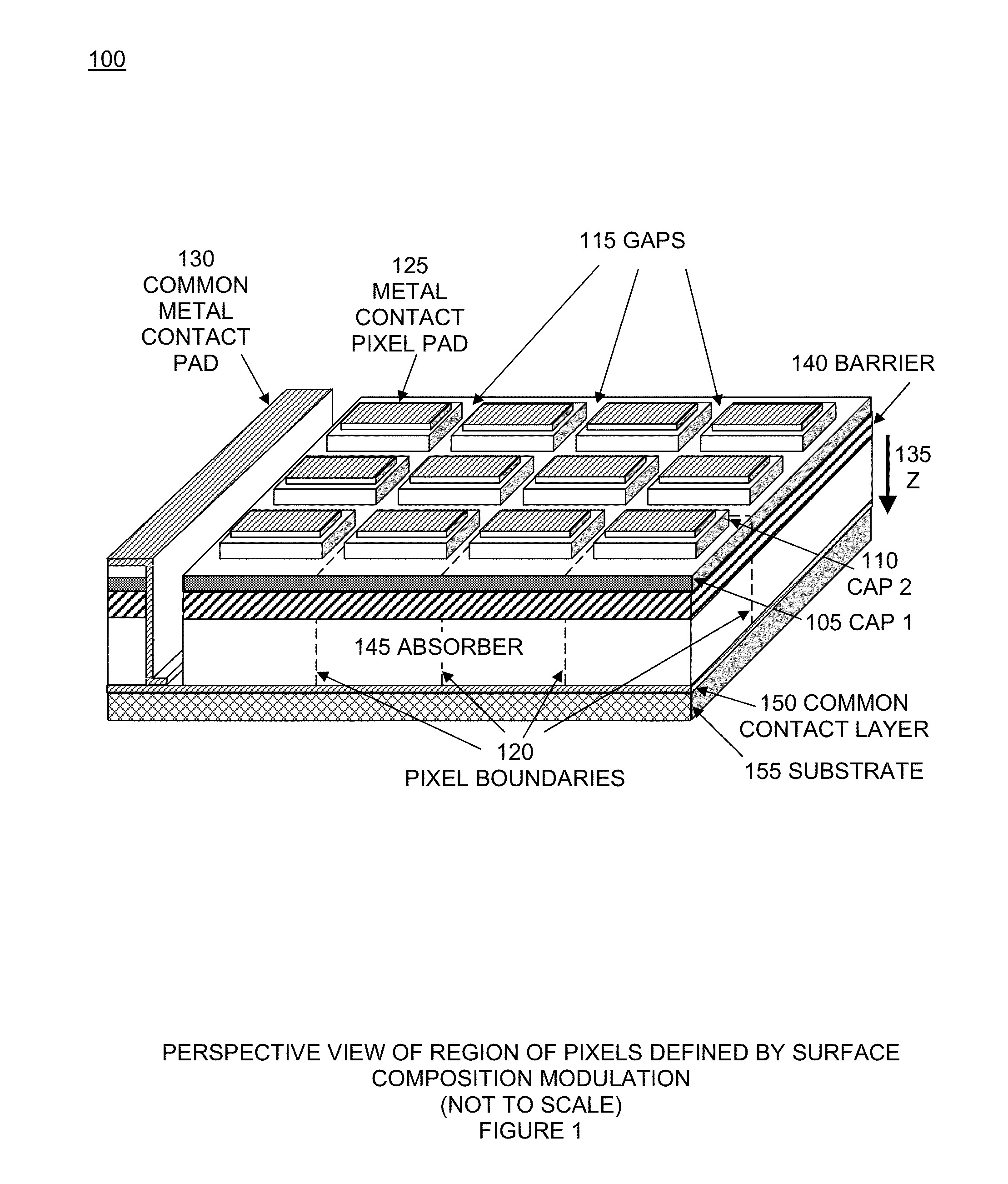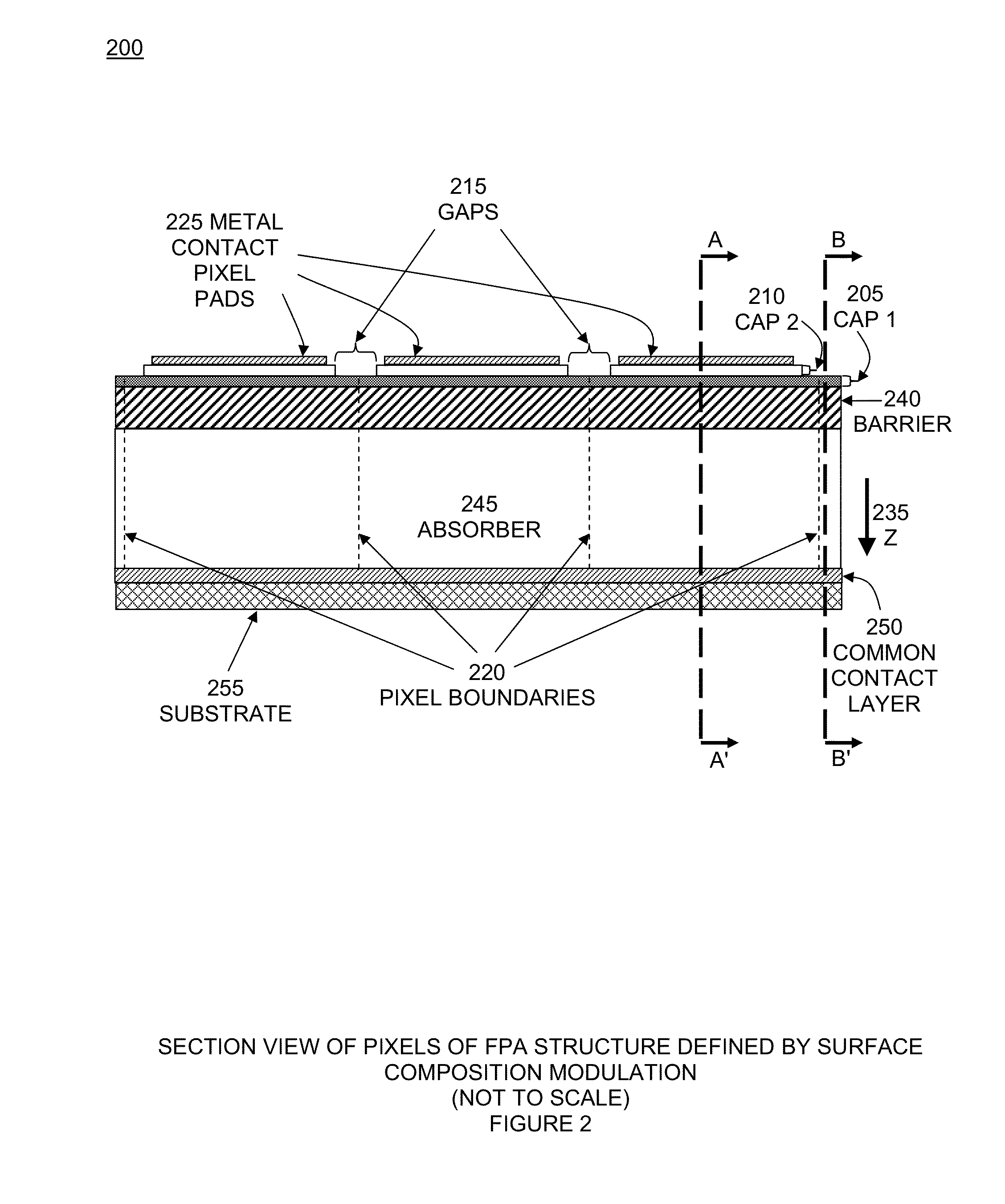Focal plane array with pixels defined by modulation of surface fermi energy
a technology of fermi energy and modulation, applied in the field of optical plane arrays with modulation pixels, can solve the problems of surface leakage current and significant complexity of fabrication, and achieve the effect of simplifying the fabrication process and minimizing the possibility of detrimental surface leakag
- Summary
- Abstract
- Description
- Claims
- Application Information
AI Technical Summary
Benefits of technology
Problems solved by technology
Method used
Image
Examples
Embodiment Construction
[0020]Embodiments comprise a method of surface Fermi energy modulation by a controlled variation of the chemical composition of the detector surface. The Fermi energy level at which the free surface of a semiconductor is pinned with respect to its energy bandgap is unique to that semiconductor and varies from one semiconductor to another; it is a function of surface states which, in turn, depend on the density and composition of surface oxides as well as surface dangling bonds. The net result is the presence at the surface and some distance below it of a net excess of charge carriers (electrons or holes) or a net depletion of them.
[0021]Varying the chemical composition of the semiconductor at a detector surface produces a corresponding variation in the surface Fermi energy (e.g. 250 meV in amplitude) which, in turn, produces a corresponding variation in the electric field and electrostatic potential in the bulk semiconductor below the surface. Embodiments exploit this effect to defi...
PUM
 Login to View More
Login to View More Abstract
Description
Claims
Application Information
 Login to View More
Login to View More - R&D
- Intellectual Property
- Life Sciences
- Materials
- Tech Scout
- Unparalleled Data Quality
- Higher Quality Content
- 60% Fewer Hallucinations
Browse by: Latest US Patents, China's latest patents, Technical Efficacy Thesaurus, Application Domain, Technology Topic, Popular Technical Reports.
© 2025 PatSnap. All rights reserved.Legal|Privacy policy|Modern Slavery Act Transparency Statement|Sitemap|About US| Contact US: help@patsnap.com



